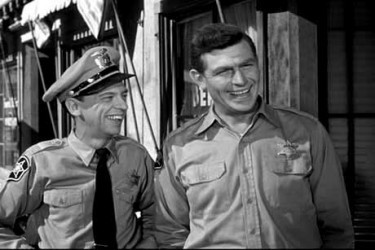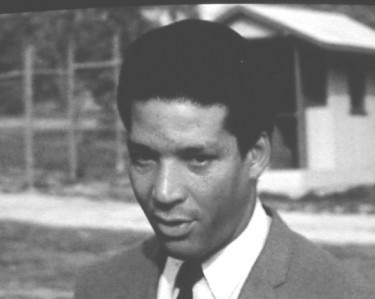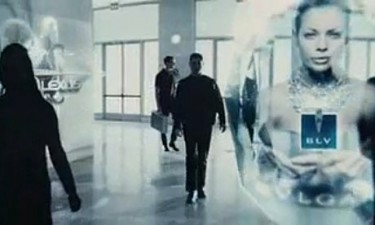Local Millennial Doesn't Deserve to Live in New York City

“A neighbor told me that she believes the landlord illegally raised the rent and submitted bogus forms to whatever agency is in charge of the whole rent-stabilization process, claiming that work done by the last tenant was done by a contractor. I have no idea what any of this means, and I do not really care…. Also, I am in college and my parents are paying my rent, so do I have to tell them? Obviously, I am looking to do nothing in this matter. Is that cool?”
— Jesus Christ, kids. (Also, you know, rent stabilization laws aren’t that complicated, and if you’re too lazy or stupid to read up on things on NYC.GOV, you actually don’t deserve to live here.)
Eric B. & Rakim's 'Paid In Full' At 25
Eric B. & Rakim’s debut album, Paid in Full, was released on July 7th, 1987 — that’s 25 years ago tomorrow. I have been having some thoughts about this. If you have not yet run screaming away from your computer to find a mud-pit to wallow in for the rest of what promises to be a horrifically hot weekend, you can read them.
1) Rakim is the most important MC in the history of rap music.
It’s still always weird to me to hear people argue about who’s the best MC. This has to do my age, and the way that the things you think at certain points in your life crystalize into something more like objective truth than opinion. I was sixteen years old in 1987, and shortly after Paid In Full came out, there was simply no debating who was the best MC. The answer to that question was Rakim, period, the end. Everyone who listened to rap knew this. At least where I was from, in the suburbs an hour outside of New York City. I have since heard stories about how there was heavy argument and rivalry around that time in the city itself. Was Boogie Down Productions’ KRS-One better? Was Big Daddy Kane better? Kool G Rap? Big Daddy Kane and KRS-One and Kool G Rap are phenomenally great rappers. And certainly, lots of people knew more about rap than my friends and I did in 1987 (and more about it than my friends and I do now.) But for us, in the halls of Red Bank Regional High School in New Jersey, it was not up for discussion: Rakim was the best.
My opinion has changed over the years: I now say that Biggie Smalls is the best rapper ever. (While Jay-Z is the “greatest” rapper ever, and Ghostface Killah is my “favorite.” I am a nudnik who gets hung up on semantics.) But my first reaction, my reflexive response when anyone asks the question is still the same: “What do you mean, ‘Who’s the best MC?’ Don’t be stupid. Everybody knows it’s Rakim.”
https://www.youtube.com/watch?v=jyl_j0g9AwU
Listening to Rakim now, and listening to the styles of rapping that came before and after he arrived on the scene, before and after Paid In Full came out, I think I would argue, that while I think Biggie is technically a better rapper — more eloquent, more versatile, more skilled — Rakim remains the most important rapper of all time. His flow — smooth, monotone, patient, cold — changed the way rappers sounded more than any other rapper before or since. And his vocabulary and his ability to put abstract intellectual concepts into rhyme expanded the rap palate in the same way. He was the first modern rapper.
2) I am old.
To a 16-year-old today, “Paid In Full” probably sounds like Dion’s “The Wanderer” sounded to me in 1987 — which was 25 years after it came out in 1962. This blows my mind. But no more than anyone should expect it to. The passage of time: Wow, man. The world just keeps changing, doesn’t it?
ASAP Rocky, one of the brightest young rap stars to come on the scene this past year, was named Rakim Mayers when he was born in October, 1988. He was named after Rakim, the rapper we’re talking about. Eric B. & Rakim are your parent’s music. Which makes sense, since their first album came out 25 years ago. I am a parent. I don’t mind this. Unlike semantics, aging is not something I get hung up on.
3) Twenty-five-year-old rap sounds better than I expected it to.
Back when Paid In Full came out, a lot of people were still saying that rap was a fad. That, unlike rock, its popularity would dwindle. This view was largely racist, I think, and I never subscribed to it. Like, I am not surprised at all that rap is still as popular today as it is. That said, listening to the old classics, records like Paid in Full, they sound better to me than I think I expected them to. One of my favorite things about rap has always been how of-the-moment it is.
A great rap record just seems to capture the sound of the day better than any other music I hear. (This might be due as much to rap’s embrace of new recording technology as anything else — it is music made from new technology: the sampler’s ability to incorporate pre-recorded sounds into a new collage form being different than the playing of notes on a piano or guitar, say.) So I think that while I was always into rap, I accepted the thought that the songs that I was loving at any given moment might not age so well. I guess I thought it might sound more like early Beatles records, the skiffle-pop that I have never so much liked, than the fully-realized later masterpieces. But I was wrong in that regard. Listening to “Paid In Full” or “Move the Crowd” or “I Ain’t No Joke,” songs from the Paid In Full album, they sound as massive and fantastic, as gloriously fresh as they ever have. They sound like Sgt. Pepper.
So this weekend, while you’re wallowing in your mud-pit, or huddling in your air-conditioned box, you should listen to Paid In Full. It’s on Spotify.
Social Grifters Are Just People Who Grasp More Blatantly

“You meet someone of import, check him out, determine [if] he can be of use, you make him yours. At some point you must decide whether to run him as a useful idiot, he not catching on as to who you are and what you do.”
— What’s most useful about this tale is understanding how the “social Ponzi scheme” works. It’s a tried and true method, practiced by many, from high-end magazine publishers to politicians to art dealers. It’s only slightly more blatant and bizarre in the example of Albrecht Muth and Viola Drath.
Liquor Recommended
Let’s hear it for the classics: “These humble bottles are four of the best bottles of liquor in the country. No improvements necessary.”
E-40 And Cousin Fik, "I'm Laced"
Here is the third best video E-40 has made this summer. It’s for a song from the triple album The Block Brochure: Welcome to the Soil 1, 2 & 3. It is very good. E-40 has been on a phenomenal run the past couple years — making music as good as any he’s made during his two-decade-long career. He’s also a singularly charming and lovable representative of California’s Bay Area. As you can tell from the first and second best videos he has made this summer.
“I thought you’d never ask, Mr. E-40!”
E-40 and Ursula proved extremely effective at getting out the vote for this year’s All-Star Game, which will be played next week in Kansas City. Inspired Giants fans placed three of their team’s players in the National League’s starting nine: catcher Buster Posey, outfielder Melky Cabrera and third baseman Pablo “Kung-Fu Panda” Sandoval — whose late surge in the polls allowed him to overtake the New York Mets’ far-more-deserving David Wright. Apparently, Wright’s 59 RBIs and 1.014 OPS, were no match for E-40’s exhortations. Rapping over the beat from Luniz’ 1995 classic “I Got 5 On It,” 40 argued that “tough plays at third make like a gold glove,” so, “Come on, Giants fans, show the Panda some love.”
It’s a compelling argument, statistics be damned.
Chris Christie's Expanding Fanbase
What do people like to watch on the Internet? Kittens, obviously. Babies. And, apparently, fat guys yelling at teachers. Internet, you creep me out sometimes.
Black & White In Mayberry
by Shani O. Hilton

When the news of Andy Griffith’s death was confirmed, I called my dad.
He is three hours behind me, and was just waking up in a suburban tract home located in the largest city in American history to ever file for bankruptcy. It is a long way from me, and a long way from where he grew up, in a haphazardly built house in all-black Slate Hill, in Roanoke, Virginia.
Tuesday was a long time from when my dad watched “The Andy Griffith Show” in the 60s. And it felt like a long time from when I would spend afternoons watching the show with him in the 90s.
And he was quiet for a minute and he cleared the sleep from his voice and he said, “Oh man.” And I said, “Yeah, man.” And he said, “I was just watching ‘The Andy Griffith Show’ yesterday.”
***
We can all say that we were just watching “The Andy Griffith Show” yesterday. Because anyone with a television could have watched it yesterday. It is on every day.
My friend Brooke is a progressive Southern white woman from a tiny town in Georgia. We shared our sadness over Andy’s death on gchat, and then she asked me what I got out of “The Andy Griffith Show” when I watched it as a kid. In her world, and in many worlds, Mayberry is shorthand for a simpler time. And as we all know — we all know this, right? — a “simpler time” is shorthand for a time when white people didn’t have to think about whether they were treating nonwhite people (or women) like humans. As Brooke said, it was mostly the “good old boys” who still clung to the ideals of Mayberry.
What I told her was that Sheriff Andy Taylor was better than Mayberry and that’s the thing people don’t get. People are nostalgic for Mayberry, but Andy spent most of the series (after the early years when his character was a silly hayseed) trying to improve it. To be nostalgic for it is missing the point. To be nostalgic for it is forgetting that Mayberry was based on a town where Griffith grew up on the wrong side of the tracks and where he was called “white trash.”
My dad agreed with me, sort of. What he told me was this: “I never looked at Andy as being too good for the others — I looked at him as being a stabilizer. A good soul who wanted to elevate those around him.”
The simplicity of the storylines remains a huge part of the appeal, my dad said. Firm morals + a wacky situation x a dash of Don Knotts being ridiculous = just good clean fun. You know the plot lines even if you haven’t seen it: Opie finds a wallet with $50. Aunt Bee starts wearing a blonde wig. Andy tries to help the church buy a new organ. And so on.
But even more than that was this: “They didn’t come across as being racist,” my dad said.

They didn’t give themselves the opportunity. Only one black actor — Rockne Tarkington — ever had a speaking role on “The Andy Griffith Show.” The story went like this: Opie was starting piano lessons. Aunt Bee was into it, but Andy wasn’t too keen. Opie then met the cool new football coach who was a black ex-NFL player. Opie suddenly found himself conflicted! Football or piano? My dad remembered this storyline clearly. (“I didn’t miss too many episodes, Shani-o.”)
Our conversation slipped into reminiscences of all the all-white shows we have known, and whether we are better off with showrunners pretending that people of color didn’t exist. “Bonanza” and “Gunsmoke” — other much-loved staples of that era in our household — would occasionally take a crack at edgier storylines involving race or gender. At best they were ham-fisted; at worst, downright racist.
All-white can sometimes be all right: “The Andy Griffith Show” didn’t have a chance to be particularly racist because it didn’t try for anything beyond sweet simplicity.
These are 50-year-old (or 100-year-old? 1,000-year old?) trade-offs. I must consider the whiteness of “Girls” and “Bunheads” and why Barney almost never sleeps with black women on “How I Met Your Mother” and why “Friends” was set in an impossibly white Manhattan and why the only black girl on “Buffy” was killed in season two and why Mercedes on “Glee” has to be so damn sassy and why Shonda Rhimes is the only showrunner regularly casting people of color in roles that aren’t explicitly People of Color. Or I must opt out altogether and hit up the black internet’s impressive collection of web series.
But back to Mayberry. Well, first, back to Virginia. Maybe more than any of the good things about the show itself, my dad’s happy childhood is why he still has enjoys these black-and-white relics. (And my love for them is obviously informed by my love for him.)
He grew up on the edge of a black neighborhood, off a gravel road that winds up a small hill. In one direction lay the self-contained black community that raised him and loved him.
In the other direction was an all-white neighborhood. It may not have nurtured him, but it was familiar, and he said it’s part of the reason why the dichotomy of being black and not seeing himself in what he watched never made him flinch.
“My Mayberry’s on the right side of me,” he said.
Mine is, too, I guess.
Shani O. Hilton is a journalist in Washington, D.C. Her favorite Cartwright is Adam, of course.
Kanye West and Pusha T, "New God Flow"
Exquisitely timed to coincide with yesterday’s announcement that scientists at the Cern Large Hadron Collider in Geneva had finally identified the elusive subatomic Higgs Boson particle — which is thought to be the key to differentiating matter from non-matter, and so therefore responsible for everything in the universe — Kanye West and Pusha T released a fittingly amazing new record called “New God Flow.” It samples a snippet from Ghostface Killah’s 2001 “Mighty Healthy,” on which Ghost re-interpolates a rhyme Sir Ibu rapped on “Divine Force’s” 1987 nugget “Holy War.” Coming on the heels of Pusha T’s recent and bone-chilling Drake diss, “Exodus 23:1,” it definitely evidences Kanye’s assertion that his Good Music collective runs this shit today. And here is a wonderful video of Stephen Hawking discussing the discovery, and how it cost him the $100 he’d bet Michigan University physicist Gordon Kane twelve years ago that Higgs boson would never be found — and then smiling. Divine Force were friends with Big Daddy Kane, and members, like Ghostface, of the Five Percent Nation of Islam, a.k.a. The Gods.
Google On The L Train: Sci-fi, Wifi And The MTA
by James McGirk

Second in a pair of essays today on freedom and the Internet. Previously: What are the politics of the Internet?
Last week, gracious youngsters from Google, Inc. were stationed below 14th Street, handing cards to commuters. The cards confirmed that those wireless signal bars appearing on certain subway platforms weren’t phishing expeditions by identity thieves or digital phantoms. Rather, they were the fruit borne of a partnership between Google and a wireless Internet provider named Boingo. Log in to their hotspot and get a summer of free Wi-Fi access all over New York City. In return, Google gets to hoard the information they generate, assembling an accurate picture of who exactly was passing through the station and when.
This repository of information will serve as both a map and an archive. The latter aspect will help generate advertising so customized that it’s fast approaching the realm of dystopian science fiction. Google also wants to tie its information to location in the real world. Not just for more accurate driving directions and a place to pin reviews of local restaurants, but in a Borgesian attempt to map everything that isn’t already online.
The Boingo operation was sponsored by Google’s coupon-spewing Groupon clone, Google Offers. According to Tim Peterson at AdWeek, , “Once a consumer enables WiFi on their smartphone (or tablet or laptop) and picks the Boingo network, they’ll come across a branded landing page to connect with the option to subscribe to Google Offers.” Subscribers receive coupons from nearby merchants. Meaning that if you access a hotspot in Soho, you will get coupons from merchants in Soho, access a Midtown hotspot and you will get an offer from Midtown, while those of us waiting for the L train at 14th Street will expect subway-related deals, perhaps discounts on those M&Ms; sold for the benefit of local basketball teams.
Certainly this is a boon to commuters and office drones looking to save money at lunch, but there is, of course, a more sinister side to this seemingly generous gesture. If you log into Google Offers at a Boingo hotspot, in theory, not only will Google know where you are, it will also know who you are, and that with some detail. That is because Google Offers is linked to every other Google account you may have, which means it can pull from an enormous database of information consisting of every email you have ever sent from Gmail, every YouTube video you’ve ever seen, every search you have ever made, etcetera. By combining all of this data together, Google can assemble a pretty accurate picture of who exactly was passing through the station, where they were going and for what reason.
Why would they care? Subway riders “are a valuable demo for advertisers to target,” Christian Gunning, Boingo’s director of corporate communications, told AdWeek, “with more than 70 percent between the ages of 18 and 54 and more than 35 percent exceeding $75,000 in annual income.” For Google to have access to information about the habits of people who ride the subway is valuable. All the more so because Google has the ability to segment its audience into far thinner slices than whether or not someone is a subway rider in New York City.
The conventional wisdom about advertising goes (and this is one of Google’s main selling points) that the more precisely aimed an advertisement is, the better it performs for the advertiser and the consumer, who presumably really did want whatever it was the advertiser was hawking. But sometimes you don’t want to buy.
George Saunders’ story, “My Flamboyant Grandson” (from the 2002 collection In Persuasion Nation) is about an old man forced to retrace his steps through the custom advert-clotted hellscape of Midtown Manhattan. In it, Saunders imagines what New York City might be like were a company like Google’s information hoarding taken to its logical extreme, crunched and fed through a pair of Google Glasses:
At Forty-third a light-pole mounted Focusser shouted, “Golly, Leonard, remember your childhood on the farm in Oneonta? Why not reclaim those roots with a cup of Starbucks Country Roast?,” in a celebrity rural voice I could not identify, possibly Buck Owens, and then, best of all, in the doorway of PLC Electronics, a life-size Gene Kelly hologram suddenly appeared, tap-dancing, saying, “Leonard, my data indicates you’re a bit of an old-timer like myself! Gosh, in our day life was simpler, wasn’t it, Leonard? Why not come in and let Frankie Z. explain the latest gizmos?”
For now Google’s ability to deploy personal information seems limited. This author’s own Google demographic profile lists him as a 65-year-old male, interested in British pop music, political humor and breakfast foods, which is either hilariously off-the-mark or confoundingly accurate, but only on a deep subconscious level. But even if Google could conjure the perfect holographic shill, the number of merchants willing to advertise in a given area is limited. Meaning, I’m not buying any off-label breakfast sausages from the local 99-cent store, no matter how good hologram Jarvis Cocker says they are.
That said, Google’s foray into wireless Internet is about a lot more than information gathering. At stake is the texture of the Internet to come. Google wants to pressgang our phones into service as roving eyes and ears, assembling maps of the real world as detailed and filled with browsable information as the non-space behind your computer monitor. The hope is that by using this geo-locative data, the Internet will layer itself seamlessly over the real world. So that you might one day be able to Google your missing car keys.
Already developers are using geo-locative data to produce strange and pungent cocktails of software. One of the most salacious was an application called Girls Around Me, a Russian innovation, which, according to NBC Bay Area News, “scans for women who have checked into [geo-locative social networking site] Foursquare… and then offers their Facebook profiles” to give you something to chat with them about. Foursquare has since removed Girls Around Me’s ability to access their data.
To hoary cyberpunk turned grey eminence William Gibson, Google’s spread into the prime material plane is an outrageous act of colonization, a conquest of society’s perceptual apparatus. Writing in the New York Times last year about Google Earth, he observed:
Cyberspace, not so long ago, was a specific elsewhere, one we visited periodically, peering into it from the familiar physical world. Now cyberspace has everted. Turned itself inside out. Colonized the physical. Making Google a central and evolving structural unit not only of the architecture of cyberspace, but of the world. This is the sort of thing that empires and nation-states did, before. But empires and nation-states weren’t organs of global human perception. They had their many eyes, certainly, but they didn’t constitute a single multiplex eye for the entire human species.
Like all proper imperial conquerors, Google faces fierce competition. Its archrival Apple, Inc. is about to release an application designed to compete with Google Maps, and, according to The New York Times, has already announced that future versions of the iPhone operating system will “no longer carry Google Maps,” effectively cutting off a rich feed of information from Google. (Naturally, The New York Times has dubbed this the “mobile map wars.”). Sponsoring wireless Internet nodes might be a way to keep those millions of iPhones under surveillance.
William Gibson warned that, “sharper cookies [despite taking adequate privacy precautions]… will slouch toward an ever more Googleable future, one in which Google, to some even greater extent than it does now, helps us decide what we’ll do next.” Perhaps the ultimate threat to Google’s dominance is a mash-up of Apple’s Map application and its portable digital personal assistant service, Siri, the digital concierge that regurgitates search results and performs simple tasks in response to spoken commands (“Siri, order me those sausages I like from the 99-cent store…”)
In his 1998 story, “Makeki Neko,” Gibson’s one-time cyberpunk contemporary, Bruce Sterling (now a bit of a grey eminence himself) conjured a convincing vision of a Tokyo in which a large number of its inhabitants have surrendered control to what appears to be a benign gift-giving network; an underground economy in which people trade favors for one another. But when a prosecutor destroys one of if its nodes in distant Providence, Rhode Island, the network begins to turn on her:
“I’m under attack. I haven’t had a moment’s peace since I broke that network. Stuff just happens to me now. Bad stuff. Swarms of it. It’s never anything you can touch, though. Nothing you can prove in a court of law.” She sighed. “I sit in chairs, and somebody’s left a piece of gum there. I get free pizzas, but they’re not the kind of pizzas I like. Little kids spit on my sidewalk. Old women in walkers get in front of me whenever I need to hurry.” The shower came on, all by itself. Louise shuddered, but said nothing. Slowly, the darkened, stuffy room began to fill with hot steam.
Each one of those miniscule actions was performed by an unwitting agent, one who didn’t even realize what he or she was doing, but it all added up to something enormous. A panopticon with claws. Which brings us back to the blue-shirted youngsters manning Google’s information booths. They may well be unwitting harbingers of evil. So think twice before you check your email on the platform, and consider deeply whom Google’s Don’t Be Evil credo is really meant for. They might mean you.
Related: One Google Books To Rule Them All? and The Google Goblins Give Firefox a Reprieve — But What About the Open Web?
James McGirk has a BA and an MFA from Columbia University. He writes a monthly column for 3QuarksDaily and his bylines have appeared in TIME, Foreign Policy, More Intelligent Life, and other publications. His short stories have been published by Fence, The Drum, Gigantic, and 3am magazine.
